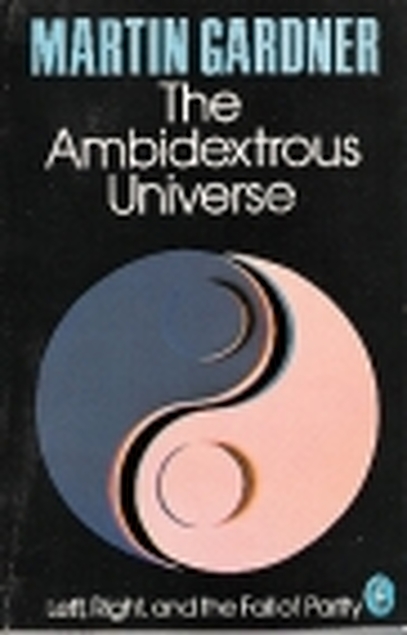Martin Gardner "The Ambidextrous Universe" (Pelican)

This is an extraordinary study within scientific dissemination, and already a classic on the subject. Gardner acknowledges that he was motivated by what he considered an apodictic principle, the total symmetry of nature, which became outdated when the violation of the parity principle was discovered with the verification of some fundamental asymmetry. But after the book was published, some concepts that Gardner considered unchangeable, such as the invariance of temporal symmetry, also had to change, which was also violated. The analysis of symmetry (mirrors, human bodies, crystals, molecules, and many more examples) leads to questions that are more quasi-philosophical than scientific, such as the arrows of time, the fourth dimension, or chrono-retrograde worlds. Essential for those who want to know some of the fundamental principles of the universe.
Martin Gardner, a famous columnist on mathematical topics in Scientific American magazine, invites us in this book to explore, in his clear and pleasant company, the fantastic world of symmetry and asymmetry in the Universe. Left and right are reflected in Science as well as in Man, both in Physics and Biology, as well as in Poetry, Art, and Magic, until culminating in the recently discovered lack of parity of the nucleus, which constitutes one of the deepest mysteries of the current physics.
From the Preface -
"The year 1957 was perhaps one of the most exciting years in the history of nuclear physics," wrote DY Bugg, in a book review on beta degradation, in The New Scientist, August 16, 1962." "In early That year the news that parity does not hold spread like lightning from lab to lab, and the professors waved their arms and talked excitedly about spin and mirrors and antiworlds, and even the students realized that something remarkable was afoot. .>
The ordinary public also realized that something extraordinary had happened, especially when two Chinese-American physicists, Tsung Dao Lee and Chen Ning Yang, received the Nobel Prize in Physics for their work that led to the overthrow of parity. But what is parity? How was she overthrown? Why were the physicists so excited?"
Fortunately, it is not necessary to know higher mathematics to understand the answer to these questions. It is necessary to have a clear idea of left-right symmetry and its curious role in the recent history of the physical and biological sciences. In this book, we discuss a simple and tricky question about mirrors. After examining mirror inversions in one, two, and three dimensions, followed by an interlude on left and right in sleight of hand and fine art, we launched into a broad exploration of left-right symmetry
and asymmetry in the natural world. This exploration culminates in an account of the overthrow of parity and an attempt to relate it to some of the deepest mysteries of modern physics.
This Pelican paperback edition may be out of date (1970) but what it conveys is fascinating, and if your curious tastebuds are whetted by this book, then it is a good primer to further delve into the mysterious realms of the physical universe.






